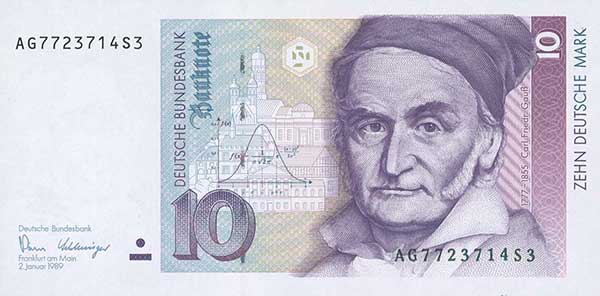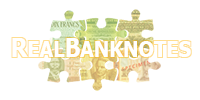The Color of Money: Recoloring of Banknotes

Paper money, whether currently in circulation or older issues, represent the customs, economy, history, and culture of nations both present and past, and so more often than not a lot of work has gone into their careful design. The issues of security and durability add an extra layer of complexity, and the politics represented are typically things that are to be cared for, but the banknotes themselves should be also easy distinguishable by those who use them, and the criteria for this stipulation is not so easy to define.
The color on the banknotes is one of the most prominent factors for the recognition of a note by an user, and throughout the world quite often people start using the slang word for some denomination based on its color. For example, in the former Yugoslavia the notes P-80 and P-90 were simply called "crvena" -- the red one. At the same time, none of other notes from the same series had a nickname based on color.
The course of history sometimes determines the need to quickly replace a banknote by another of the same denomination, and the simplest way to do so is to re-color the banknote. One example of re-coloring due to war a event is described in the article "Malaya Paper Money Issues: 1940-1941". Yugoslavian notes P-105, P-106 and P-107 were analogously recolored into P-108, P-109 and P-110 respectively because of the declaration of independence of Slovenia and Croatia, with a small but significant change of the inscriptions on the back.



"Original Yugoslavian banknotes p105, p106, and p107".



"Recolored Yugoslavian banknotes p108, p109, and p110".
But there need not to be a war to warrant the re-coloring of a banknote. The dissolution of a country or peace accords and the introduction of a new constitution can also provide cause for recoloring as demonstrated by the Democratic Republic of Congo banknotes P-87, P-88, P-89 and P-90, which were replaced by identical designs but different colored notes P-91, P-92, P-93 and P-94.




"Original paper money from the Congo Democratic Republic, including p87, p88A, p89, and p90".




"Original paper money from the Congo Democratic Republic, including, from left to right, p93, p94, p91, and p92".
In a separate instance, in order to distinguish the notes of different value the Turkish 5 lira note P-222 was recolored from yellow to dark yellow after two years in use. As it turned out, it was too alike to the 50 Lira note P-225 of the same series.
But what was the reason to change the color of the Croatian 10 Kuna P-29 note into P-36, after just one short year in circulation? It was then a newly introduced issue with a clear color distinction between the values of Turkish banknotes, there was no forgery case; furthermore it was next one to the smallest denominations in circulation (approximately 3 German marks, which is 1.5 Euro today). The reason was not in Croatia itself, but in Germany instead. The Croatian P-29 banknote was too similar to the German 10 Mark note p38a and the German Mark was widely used as reserve currency in Croatia, as well as in the other Yugoslavian successor states. Since it was easy to mistakenly replace a 10 Kuna banknote with a 10 Mark note, the Croatian paper money was recolored to a brown color, and it has remained brown (P-36 and similar P-38 and P-43) up to this date.


"Original Croatian 10 Kuna banknote from 1993 p29a at left, with its recolored counterpart p36a from 1995".

"The German Federal Republic banknote (p38a) which prompted the recoloring of Croatia p29a".
It is interesting to think of the reasoning behind the original design of banknotes, and perhaps even more interesting to consider their recoloring. With cases such as these, it is easy to imagine the countless number of considerations that have to be taken into account every time a banknote is designed.





